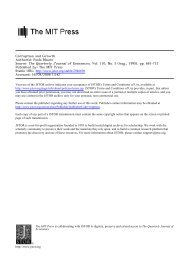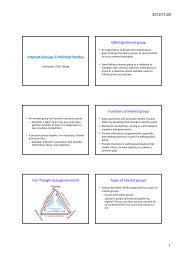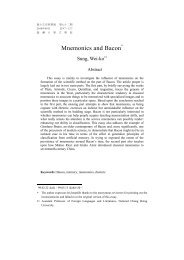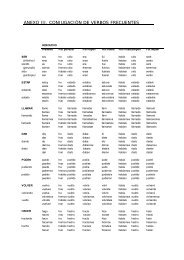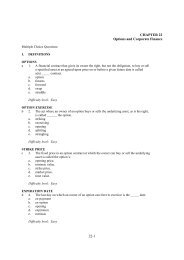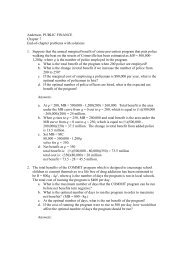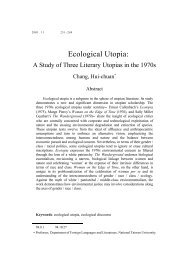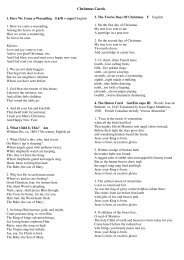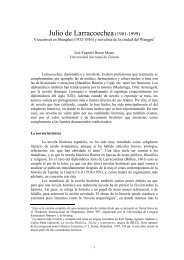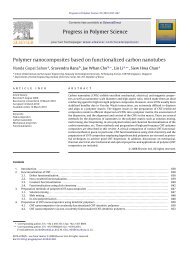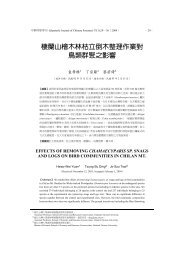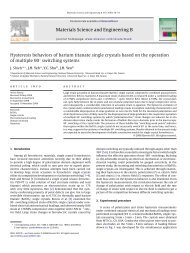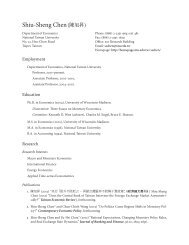Hands-on Exercise 3 Molecular Dynamics Simulations
Hands-on Exercise 3 Molecular Dynamics Simulations
Hands-on Exercise 3 Molecular Dynamics Simulations
You also want an ePaper? Increase the reach of your titles
YUMPU automatically turns print PDFs into web optimized ePapers that Google loves.
5. Analysis of MD Results<br />
Basic properties you may obtain from doing MD Simulati<strong>on</strong>s<br />
1. Energetic Properties: valence energies (b<strong>on</strong>d, angle, torsi<strong>on</strong>,<br />
inversi<strong>on</strong>), n<strong>on</strong>b<strong>on</strong>d energies (vdW, Coulomb), potential, kinetic,<br />
and total energies, Hamilt<strong>on</strong>ian, etc.<br />
2. Mechanical properties: density, pressure (stress)<br />
3. Transport properties: diffusivity, thermal c<strong>on</strong>ductivity, viscosity<br />
4. Electrical properties: dielectric c<strong>on</strong>stant<br />
5. Structural properties: IR, radial distributi<strong>on</strong> functi<strong>on</strong>, X-ray<br />
diffracti<strong>on</strong>, neutr<strong>on</strong> diffracti<strong>on</strong>, electr<strong>on</strong> diffracti<strong>on</strong><br />
6. Thermodynamic properties: adiabatic compressibility, isothermal<br />
compressibility , thermal pressure coefficient, gruneisen parameter,<br />
isobaric heat capacity, isometric heat capacity, volume expansivity,<br />
isoenthalpic Joule-Thoms<strong>on</strong> coefficient, isothermal Joule-Thoms<strong>on</strong><br />
coefficient, speed of sound<br />
Page 13<br />
stlin@ntu.edu.tw



